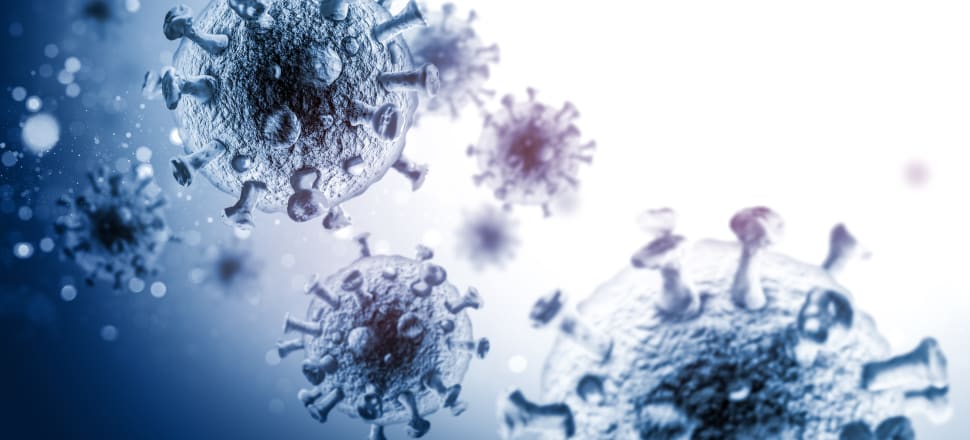
New Zealand is a global leader in its HIV response. Peter Saxton writes that eliminating the virus will be hard, but entirely possible.
Aotearoa New Zealand is launching an ambitious HIV Action Plan to eliminate HIV transmission by 2032. Our country is well-placed to achieve this ambitious target, last year recording the lowest HIV diagnoses for 20 years.
As the consultation phase begins, it’s helpful to reflect on three themes: Principles underpinning our successful response; the critical role of science and evidence; and our current and future challenges.
Emeritus Professor of preventative and social medicine and playwright John Broughton, Ngāti Kahungunu and Ngāi Tahu, recalls an early HIV education poster for Māori containing the line: “Like Maaui we can control our destiny”. This nicely captures features of New Zealand’s initial HIV response, including:
- early mobilisation, before the virus arrived - activism, to warn community and decision-makers - science and evidence, steering us towards effective interventions and away from stigma, scapegoating and fallacies - peer-led delivery, so prevention advice was authentic, trusted and acted upon - public visibility, of brave people living with HIV, gay men, trans-people, sex workers, refugees and migrants, people who inject drugs, even children, to shift hearts and minds, humanise the epidemic and build public support - targeted action: The lesson that if we enabled small, vulnerable, most-at-risk groups to protect themselves, that would contain the epidemic, protecting society.
These principles represented a new way of doing public health: changing social, legal and policy environments to promote health and remove barriers to action. New Zealand can proudly point to internationally progressive initiatives such as: homosexual law reform in 1986; the world’s first publicly-funded national needle exchange programmes in 1987; reformation of the Human Rights Act 1993 outlawing discrimination; decriminalising sex work in 2003 - again a world first - and marriage equality in 2013.
This legacy is now clear. Countries like ours, which took on that hard work early, now have smaller epidemics of HIV compared to countries that didn’t. That difference in the size and pattern of epidemics should be electrifyingly motivating. It shows both the value of collective bipartisan responses, and conversely, the price we pay for inaction, hesitation, and division.
Dr James Curran, a US CDC Scientist, famously described HIV surveillance as “the conscience of the epidemic”. Like many truisms, this works on multiple levels. High quality surveillance warns us about the size and speed of epidemics. It measures our past successes or failures, and guides governments where to allocate future resources. It spotlights gaps and inequities.
Overall, New Zealand has a low-level HIV epidemic concentrated in defined groups. HIV among sex workers and people who inject drugs is among the lowest in the world. Transmission among men who have sex with men (MSM) peaked first in 1988 and again in 2016, before declining to just 29 diagnoses of locally acquired HIV in 2021 - among the lowest per capita rates internationally. No child has contracted HIV from a mother whose diagnosis was known at the time of birth in this country.
Surveillance also reveals the unacceptable gaps. A third of MSM have their HIV diagnosed late, while for heterosexuals it is half, with Māori and Pasifika too often diagnosed later.
Our research revealed that one in 20 MSM in New Zealand - 6 percent - were living with HIV, one in five of whom were unaware of their infection. Such profound inequities persist, with transmission among MSM still 350 times higher than among non-MSM.
Our behavioural studies show that MSM embraced safe sex practices. Gay communities sustaining safe sex, voluntarily, for more than 30 years must be one of New Zealand’s greatest public health triumphs. This is among my most cherished lessons as a public health researcher: to count not just the transmissions that did happen, but also to somehow make visible the transmissions that didn’t. Each act of safe sex represents a potential HIV transmission averted, and our epidemic would be many times larger had it not been for the protective actions taken by our most-affected communities over the years.
Our recent study of sex and prevention of transmission (SPOTS), of 3900 participants, the country’s largest ever HIV prevention study, will provide a baseline to inform decision-making across the action plan, which includes over 500 takatāpui MSM and 125 Pasifika MSM. As most Māori at risk of HIV and living with the virus are takatāpui, SPOTS will be key to monitoring delivery on the Government’s Te Tiriti o Waitangi obligations.
The final quotation is from health anthropologist Tony Barnett and health economist Alan Whiteside’s book AIDS and the Twenty-First Century. They assert that “[a]n epidemic is par excellence a collective event”. This works on many levels. It reminds me that epidemics are never just about individuals but also their partners, and the actions of one can ripple out to touch many. One person’s protective behaviour can stop chains of transmission to multitudes. Furthermore, prevention behaviours are embedded in social processes, meaning even the best ideas and innovations must be supported by work upstream at the population level. Stigma surrounding HIV, sexuality and sexual health needs to be dismantled at all levels of the response.
We have all the tools needed to virtually eliminate HIV transmission: condoms, pre-exposure prophylaxis, testing, treatment to improve wellbeing and stop infectiousness, needle exchange, antenatal screening. Zero is within our grasp, but it will get harder the closer we get. We have to connect into those corners of society we haven’t yet earned the trust of, still out of reach.







